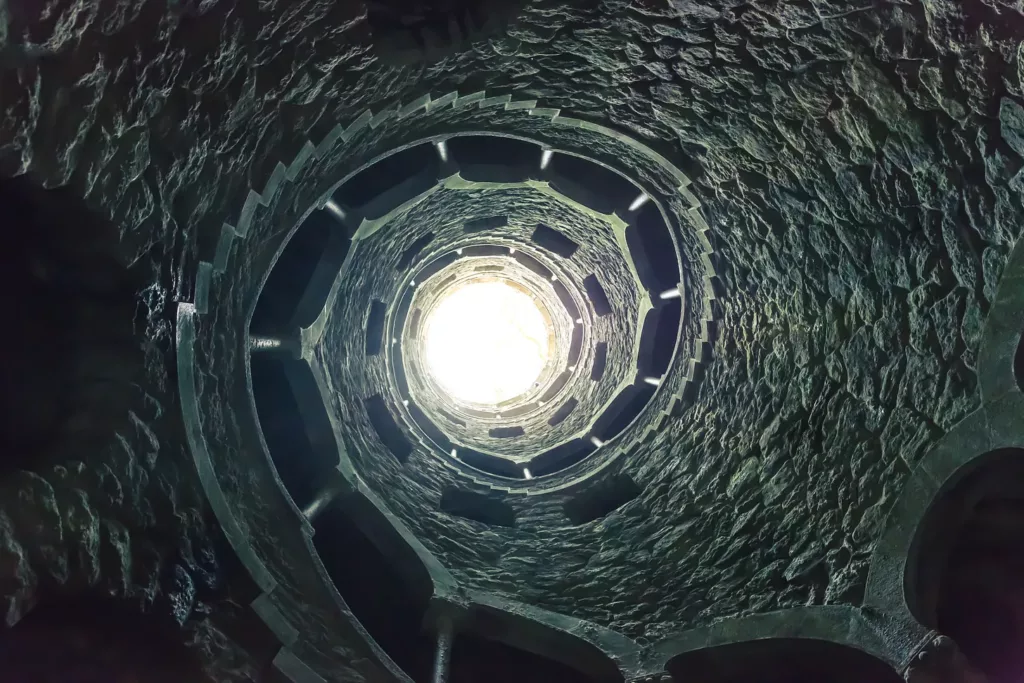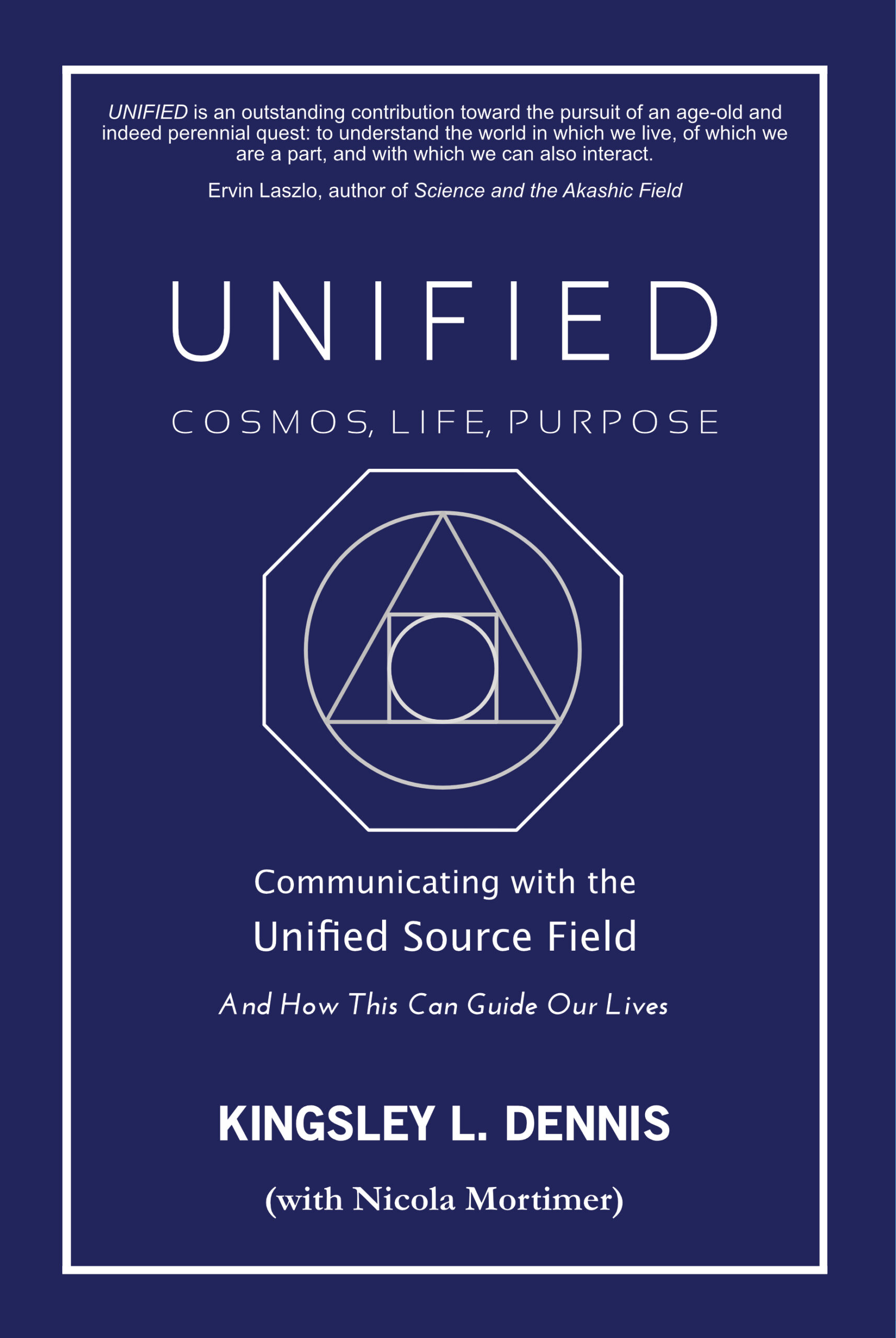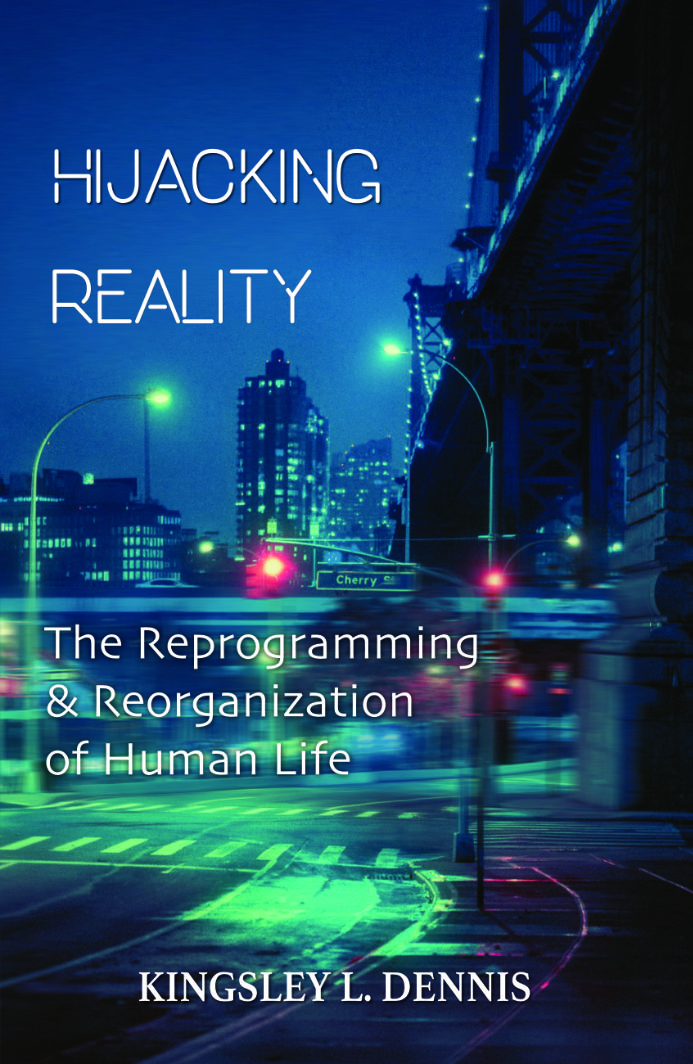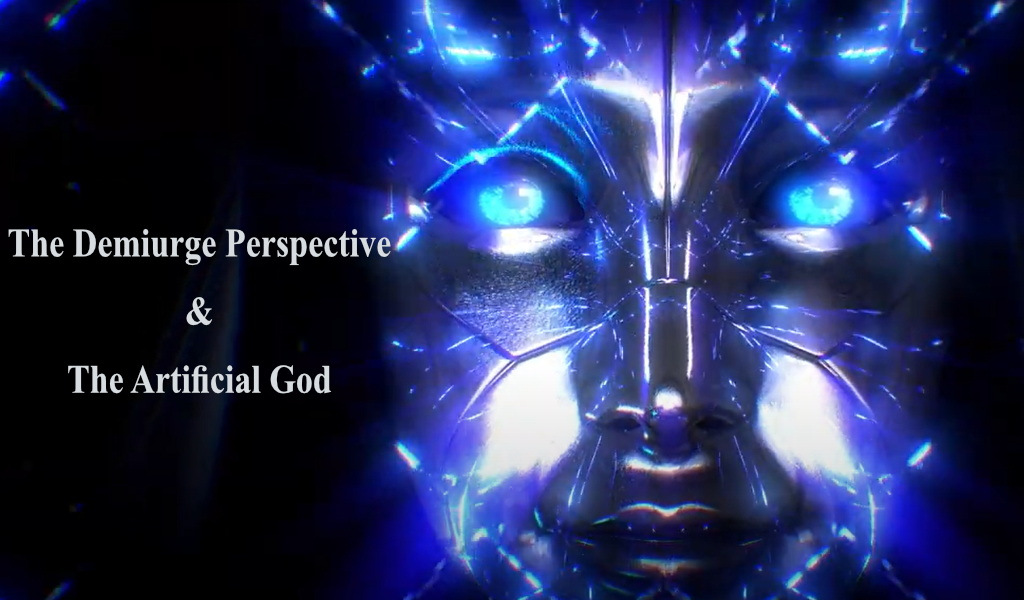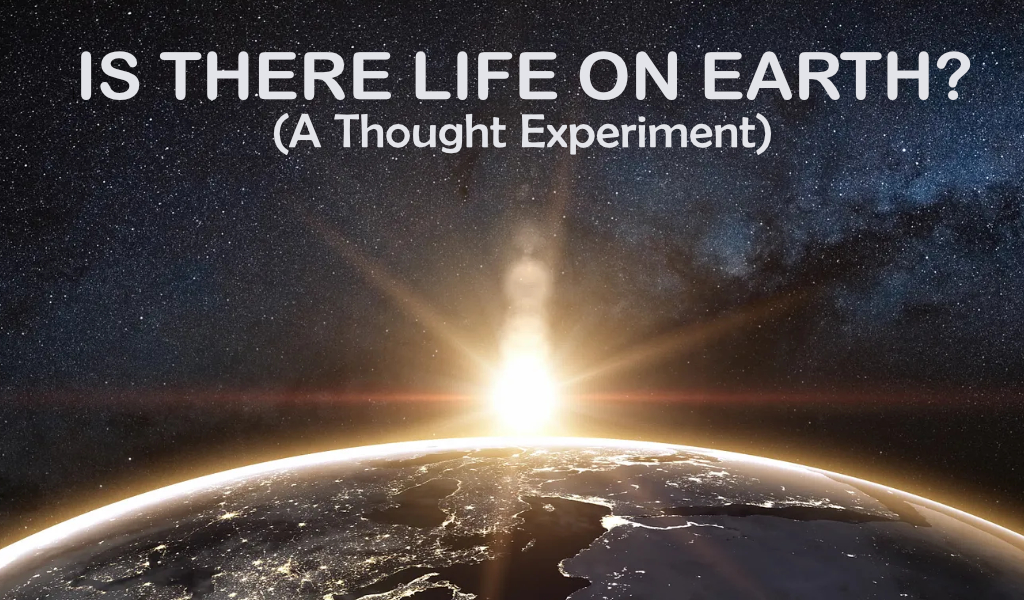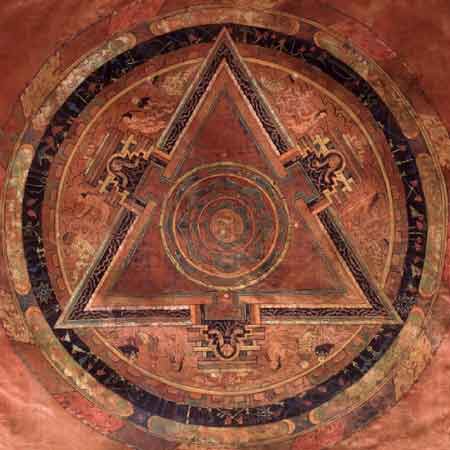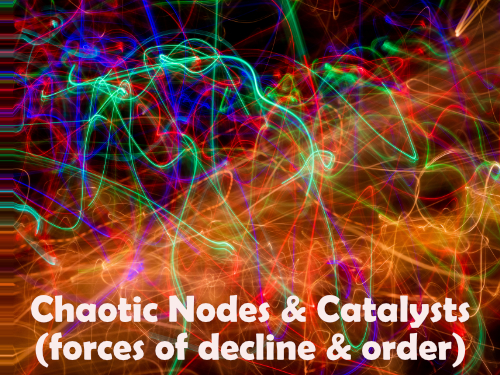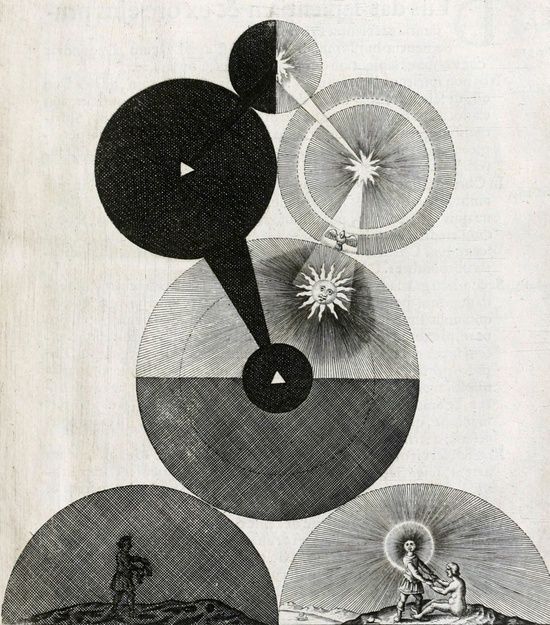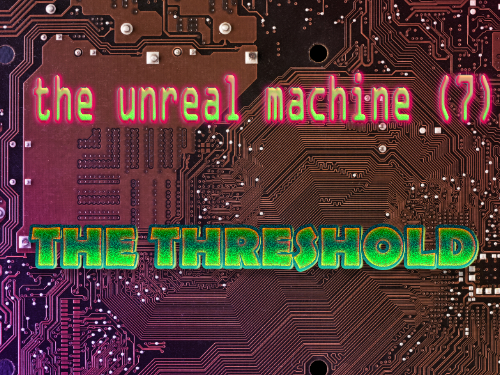[An essay taken from Ch.3 of New Revolutions for a Small Planet written by the author in 2010-2011 and published in 2012]
Something is dying, and something is being born. The stakes are high, for the future of humanity and the future of the Earth.
Richard Tarnas
Myths abound in many cultures that tell of a once utopian Golden Age, where peace and harmony reigned supreme. In some ways the myth of the hero reflects this need/desire to undergo trials and tribulations in order to re-emerge victorious, renewed and re-spirited. The signs and reminders are everywhere in our cultural artefacts, tales/stories/myths, histories and beliefs. Our Earth is scattered with the remains of many long-passed civilizations as if to remind us that this too will pass. We are fascinated with tales and speculations about the lost lands of Lemuria and Atlantis; of speculations about lost civilizations at the bottom of our oceans, or even more ancient cultures now washed away with the sands of millennial time. Rather than living in linear time many of us are beginning to realize that the passing of events – terrestrial and cosmic – occurs in cycles. What has gone before may be re-encountered, and thus the signs of past experiences may be of deep value to us.
The Tibetans have an account whereupon humanity is living at the end of a 26,000-year period of darkness, and that this dark period will be followed by a ‘a period of purification’. However, we will first have to face a series of catastrophes and political/social upheavals before the next epoch emerges. This account is remarkably similar to both Mayan and Hopi prophecy accounts which both tell of a dark period of upheaval and great change before the next cycle fully materializes. The time frame of 26,000 years is identical to the Mayan calendar which indicates that the ‘Age of Jaguar’, the 13th baktun, or long period of 144,000 days, will come to an end with the fifth and final Sun. This time frame indicates a cyclic Great Year; that is, the time required for one cycle of the precession of the equinoxes to be completed, which is calculated to be approximately 25,765 years, and this passing will mark the ‘switch’ to a new era of planetary evolution, one that requires a radically different kind of consciousness. Similarly, there exist Teutonic Norse myths which state that ‘a renewal of the world would only come after great destruction in which a period of anarchy would arise that would see humans commit many foul acts’.14
Another example of eras as part of what are called ‘Great Ages’ include the ‘Yugas’ of Hindu philosophy (epochs within a cycle of four ages from Satya, Treta, Dvapara and Kali). Such ages are known cycles within celestial motion, and within these macro cycles occur significant periods of planetary change. Many commentators speak of present conditions on Earth being under the influence of the Kali Yuga, which is ‘always oppressed by bad rulers with burdens of taxes, the foremost of the best classes will, in those terrible times, take leave of all patience and do improper acts’.15 It is said that the Kali Yuga will come to an end after much chaos and disruption.16 This doesn’t seem so different from present conditions today – bad rulers with burdens of taxes! Biblical accounts, too, abound with times that denote the end of one cycle: ‘For nation shall rise against nation, and kingdom against kingdom: and there shall be famines, and pestilences, and earthquakes, in divers places.’ (Matthew 24:6) Again, not too dissimilar to present global conditions.
These examples are only a few of the many Earth myths that contain references to celestial cycles and cyclical epochs. According to the book Hamlet’s Mill, a work of comparative mythology, there are over 200 myths/folk stories from over 30 ancient cultures that refer to the ‘Great Year’ – the precession of the equinoxes. Celestial calendars have been the central structure for many past civilizations, whose rituals and social lifestyles were arranged in resonance with celestial cycles. It appears that our ancestors were much more aware of cyclic change than we are today, and so the nature of rise and fall, dark and light ages, catastrophe and catharsis, are common themes among the long journey of evolutionary time. Mythologist Richard Heinberg sums up this rise–fall–rise cycle when he says ‘Humanity’s moral or spiritual decline must eventually culminate in a catharsis of cataclysmic dimensions, from which will emerge the seed of a restored age of peace and perfection’.17
The idea, then, of a planetary near-death experience doesn’t seem so fantastical when placed in the context of cyclical change. It may well be that our current age is experiencing the beginnings of this upswing – a rising cycle, rising mind – and as it does so it must first witness the Earth shaking as the planet passes through its own cosmic spiral as part of the precession of the equinoxes. This begins to make more sense when we put together James Lovelock’s Gaia hypothesis, Jung’s collective unconscious, and the increasing crisis in our ecosystems, biodiversity, geophysical disruptions and climatic variations. The warning signs are all around us, for those with eyes to see, and a mind to care. This is why I use the near-death experience as a metaphor for the transition period we are passing through now, and which is likely to become more distressed in years to come.
Our old mind is one where we wish to intervene with the planet to restore ‘business as usual’; i.e., restoring the planet to how we wish it to be rather than adapting to a planet that is in need of readjustment. As scientist James Lovelock, originator of the Gaia hypothesis, recently put it:
The real Earth does not need saving. It can, will and always has saved itself and it is now starting to do so by changing to a state much less favourable for us and other animals. What people mean by the plea is ‘save the planet as we know it’ and that is now impossible.18
The old mind is one of the greatest obstacles to successfully passing our global initiation. Indeed, this is no child’s play, no page of poesy metaphors: astrophysicist Martin Rees (President of the Royal Society 2005–10) has publicly stated that he considers the odds of our civilization on Earth surviving to the end of the present century as being no more than 50/50. Rees believes that we are currently at risk from both ‘malignant intent’ and ‘misadventure’, citing that the 21st century could be a foreclosure upon the human journey. In his 2003 book Our Final Century he writes that ‘A catastrophic collapse of civilization could destroy continuity, creating a gap as wide as the cultural chasm that we would now experience with a remote Amazonian tribe.’19 This is reminiscent of the scenario put forth in Walter Miller’s apocalyptic novel A Canticle for Leibowitz whereby a global catastrophe sends civilization back to the dark ages, before it again ascends to technological heights. Lovelock is acutely aware of this possibility which is perhaps why he has proposed creating a ‘start-up manual for civilization’ including information on how to make fire, agricultural techniques and practices, genetics and technology. This manual would then be distributed far and wide, proposes Lovelock, in order to safeguard some of our treasured knowledge should … should something happen?
In a similar direction, NASA once proposed creating a repository on the Moon to preserve humanity’s learning, culture and technology. This plan was dubbed the Lunar Ark and intended to preserve technology, art, crops, and both animal and human DNA. Parallel to this is the recently opened (February 2008) Svalbard Global Seed Vault, which is a secure underground seed-bank on the Norwegian island of Spitsbergen, about 1,300 kilometres from the North Pole. The seed vault preserves duplicate seeds from gene banks worldwide and will provide refuge for seeds in the case of large-scale regional or global crises. It is almost as if there are moves underway to prepare for our collective near-death experience. After all, we have been building up for it – it has been estimated that 187 million people perished in the 20th century alone from human agency (war, massacres and persecution). Then in the second half of 20th century we had the threat of all-out nuclear annihilation hanging over our heads. Now we are in the second decade of the 21st century, and it looks as if things are about to get worse.
A near-death experience may be a sudden event; a sharp shock that literally throws one out-of-the-body and into a terminal phase. Here, I wish to take a brief foray into some of the sudden impacts that might be considered unpredictable and/or unknown, and which could provide a dramatic shock awakening and force a necessary rapid reorganization upon human civilization.
- Bio-threats
In 2002 Wired magazine ran an article asking prominent scientists for ‘long bets’; astrophysicist Martin Rees bet 1,000 dollars ‘that by the year 2020 an instance of bioerror or bioterror will have killed a million people’. He countered this by adding – ‘Of course, I fervently hope to lose this bet. But I honestly do not expect to.’20 The issue of bio-threats is a Pandora’s box waiting to be opened.[i] In reality, only a total police state could offer hope of protection for a world where no bioweapons were manufactured – and even this may not be possible. The reason is that ‘biological superweapons’ are so easy to manufacture that they can be created in low-key labs with moderate skill. Interestingly, on 22–3 June 2001, a bio-terrorist attack simulation was conducted, codenamed ‘Operation Dark Winter’. It was designed to carry out a mock version of a covert and widespread smallpox attack on the United States. The scenario involved a localized smallpox attack on Oklahoma City which was then designed to spiral out of control. The simulation was then expected to deal with a catastrophic situation as the disease’s rapid spread meant the contagion could not be contained. The mock attack was meant to highlight the consequences of a massive loss of civilian life and the widespread panic, social breakdown and mob violence that would ensue as infrastructures were left unable to cope with the strain.
In what appeared to be another bout of strange coincidence, earlier in the year, in February 2001, a BBC film crew began work on filming a ‘docu-drama’ that they titled Smallpox 2002. The BBC website description – ‘This docu-drama reports on a fictitious attack made by terrorists using the smallpox virus. Starting in New York the virus is ruthlessly carried out by one man travelling around the city.’ As we know, several months later the anthrax scare in the US became a reality, which was not lost on BBC producer Simon Chinn:
We began production on Smallpox 2002 in February 2001. ‘This is not science fiction’, had been our mantra, this could happen. This film is not about a distant future, it’s about tomorrow. Suddenly, seven months later, bioterrorism became a reality and Smallpox 2002 acquired the kind of prescience it had never sought.
The BBC docu-drama dealt with the social consequences of a pandemic and how families have to deal with such issues as martial law and enforced quarantine. It is clear that a well-orchestrated bio-terror attack could have disastrous consequences with a knock-on effect to world markets and financial trading; upon a grand enough scale, it could bring the world to a virtual lock-down.
The threat of a pandemic ‘scare’ has already been experienced by the media-encircled world through the 2009 swine flu fracas. In this incident a global outbreak of the H1N1 influenza virus (commonly referred to as ‘swine flu’) and which appeared to be a new strain, began in the state of Veracruz, Mexico, in March 2009. By June 2009 the World Health Organization (WHO) and the US Centers for Disease Control (CDC) declared the outbreak to be a pandemic, despite the relatively few cases of infection. The new ‘outbreak’, however, had the world’s full attention by this time – it was a global pandemic and nations were rushing to secure millions of vaccine doses. Major pharmaceutical companies such as GlaxoSmithKline and Baxter were racing to get vaccines tested, prepared and shipped out to desperately waiting governments worldwide.
In January 2010 a member of the health committee at the Council of Europe, Wolfgang Wodarg, joined other critics to claim that major pharmaceutical firms had organized a ‘campaign of panic’ to pressurize the WHO into declaring a ‘false pandemic’ in order to make profit for selling vaccines. Whatever the specifics here, it does show that virus outbreaks such as H1N1 swine flu, a variation on bird flu (H5N1), SARS (severe acute respiratory syndrome), foot and mouth disease, etc., are all in danger of becoming global pandemics due to our human chains of transmission. In a world of high mobility and interconnectedness, localized outbreaks can easily become global threats. It is perhaps only a matter of time before the next mutated virus becomes a ‘near-death’ catalyst for a slumbering mass mind.
2. Technology Shock
Being integrated makes us vulnerable, not only as human chains of transmission but also as dependent technological chains. We have never been a species in isolation; we have always existed within a complex ecosystem of animal, vegetable and mineral (as the old guessing game used to go). Now we have an added ecosystem which is a technological one. As such, we have co-evolved a world that is entwined symbiotically between the biological and the technological. Philosopher Joël de Rosnay considers that our species is now symbiotic and, as such, information and energy regularly transfers through both biological and technical networks, enmeshing all processes together.21 In such a symbiotic world of increased integration and interdependence there is increased potential for disruptive technological shocks:
We are entering an era when a single person can, by one clandestine act, cause millions of deaths or render a city uninhabitable for years, and when a malfunction in cyberspace can cause havoc worldwide to a significant segment of the economy: air transport, power generation, or the financial system. Indeed, disaster could be caused by someone who is merely incompetent rather than malign.22
The reality of the world is that we are moving from physical interventions-invasions into cyber-warfare and sabotage. This is becoming all too common over recent years with such incidents as the Titan Rain and Estonia cyber-attacks.
The Stuxnet computer worm, which was first discovered in June 2010, was specifically created and programmed to attack critical infrastructure systems (what are referred to as Supervisory Control and Data Acquisition systems – SCADA). This worm, now dubbed the world’s ‘first cyber- superweapon’ by experts, has infected a high number of critical energy infrastructure systems in Iran, notably its nuclear facilities, as well as a large number of Chinese facilities. One expert digital security company stated that the Stuxnet computer attacks could only have been produced with nation-state support, thus making it a specific cyber-weapon that will lead to the creation of a new arms race in the world.
Imagine a state suddenly having its energy and communication networks crash: electricity networks go offline; all Internet communication is stopped; transportation grounds to a halt as transport networks cease to function. The food would stop reaching the shops, people would be told to stay indoors and not to travel as traffic signals may not be working. Hospitals would revert to generators for power back-up whilst desperately needed medicines may not be distributed to those home-bound. It would create wide-scale panic leading to civil unrest and looting. If the infrastructures were not immediately restored, then eventually everyone would turn to fending for themselves. The country would be put under martial law and some areas would revert to tribal organization and brute force. In such complex ‘civilized’ societies it only takes a critical disturbance to create widespread breakdown.
In late September 2010 the US Department of Homeland Security hosted a massive simulated cyber-attack exercise named Cyber Storm III, which is aimed at testing the security of both government and private-sector organizations. The US government has also recently launched a grand programme dubbed ‘Perfect Citizen’ that aims to detect cyber-attacks against private companies and governmental agencies responsible for infrastructures such as energy, transportation and security networks. This shows that the threat to a nation’s critical infrastructures is being taken seriously. In May 2010 Cyber Command (CYBERCOM) officially became operational in the US after several years of preparation. It plans a rapid expansion to ensure that all military computer networks are free from hackers and that military activities are fully protected against cyber-spies. Procedures are also allegedly underway for CYBERCOM to offer assistance to governmental and civilian networks, effectively intertwining military and civilian defence systems.
Similarly, the UK government released its National Security Strategy in October 2010, listing cyber-attacks as one of the most important challenges faced, alongside international terrorism. Following this, the UK’s Strategic Defence and Security Review explained how Britain will use the new £500-million boost to defend itself against such attacks. The head of Britain’s Intelligence and Security Committee (ISC) is alleged to have warned that cyber-attacks against both government and corporate computer systems could be ‘the next Pearl Harbor’
The rise of cyber-warfare is another aspect of the growing arsenal of ‘silent weapons’ that are filling the technosphere. The technological arms race now includes an array of space-based weapons and electromagnetic pulse weapons that can be operated through an invisible landscape. In this regard we may not even see the near-death experience coming; it will be shrouded in a virtual ether. However, the ensuing technological shock will be all too real, and may be reminiscent of a throw-back to the pre-technological Dark Ages. Our over-reliance upon external, internal, and behind-the-scenes systems may turn out to be our greatest weakness.
3. Natural Hazards
We may not need to worry about near-Earth objects (NEOs) hitting us, such as asteroids from space that have left us a crater-pocked Earth, since we have our own natural hazards to worry about. Despite the 50 per cent risk of an asteroid impact in this century on the scale of the Tunguska event that occurred in June 1908, we are likely to have concerns closer to home. The Earth is currently experiencing an unpredictable set of geological changes and disruptions, including hurricanes, earthquakes and volcanic eruptions. The year 2010 especially highlighted the fragility of the human species upon a dynamic and shifting planet.
Early 2010 opened with a record seismic bang with the earthquake in Haiti on 12 January that was of a magnitude of 7 (on the moment magnitude scale). Due to the geology of the island and its living conditions it suffered a dramatic impact. It has been estimated that 3 million people were affected by the earthquake; a reported 230,000 fatalities; 300,000 injuries; 1 million homeless; and nearly 300,000 buildings damaged or destroyed. Such huge figures have made the Haiti earthquake the sixth deadliest earthquake in recorded history – and yet this was soon followed by the fifth strongest since the 19th century. On 27 February an 8.8 earthquake (moment magnitude scale) struck off the coast of Chile causing huge tremors across 80 per cent of the country and being felt as far away as major cities in Argentina and Peru. The earthquake also triggered a tsunami which resulted in warnings being issued in 53 countries; the San Diego area of California and northeastern parts of Japan were also affected. Chile experienced a blackout for 93 per cent of its population that, for some, lasted for several days. Looting ensued and the military were called in to restore peace and control damaged areas. The year 2010 was surely off to an explosive start – all that remained was for a volcanic eruption to add to the mix.
On 14 April 2010 the Icelandic volcano Eyjafjallajökull, which had had some minor eruptions the previous month, finally bellowed volcanic ash several kilometres into the atmosphere causing havoc and affecting economic, political and cultural events throughout the world. A European air travel ban was put in place causing extensive worldwide travel disruption. The International Air Transport Association has estimated that the airline industry was losing £130 million per day. Fears grew that daily deliveries of food supplies would be affected and that some countries, such as the UK, would experience shortages. Spoilage concerns also disrupted stocks of medications; global transport companies such as FedEx and DHL had to initiate road routes to compensate for closed air space; travel firms reported daily loses in the millions; some car manufacturers and IT firms were forced to suspend production because of interruptions in the supply chain of electronics. Kenya suffered greatly because of its time-sensitive flower export industry which, reported its Flower Council, had to destroy 3,000 tonnes of flowers due to spoilage. On top of this, cultural and sporting events saw widespread cancellations and disruptions; royal and state visits were suspended; and political dignitaries were forced to cancel their travel plans.
From just a few days of cloud ash the world was brought into chaos and upheaval. Not only companies suffered but people were given a brief picture of the fragility of such on-time delivery economies and lifestyles. We expect fresh food on the shelves each day; we expect to step onto an airplane and be halfway around the world in just a few hours; we are used to everything around us being on time, in time, and timely. The Icelandic ash cloud cracked this illusion and revealed, to those who could see, that our global systems may be efficient and convenient, yet they are not resilient. Each day that passes brings our civilization one step closer to a near-death experience through natural hazards. And it may even be a ‘natural’ hazard that is human made.
4. Human-made Hazards
We may not need any natural hazards to force us into an uncomfortable rite of passage; it seems we are quite capable as a species of providing the necessary shocks ourselves. Within the industrial period of our technological phase, we have had our fair share of disastrous accidents. In truth there are industrial accidents occurring throughout the world virtually all the time; many of these are minor and do not make (or are forced not to make) the headlines. There are, no doubt, countless ‘near misses’ that are left under the radar, and of which the general public know nothing. For the sake of brevity, I shall refer to only a few of the most infamous human hazards that have occurred over the last three decades.
The Bhopal gas tragedy is infamous the world over as being the worst industrial catastrophe to date. On the night of 2 December 1984 the Union Carbide India Limited pesticide plant in Bhopal, India, leaked a poisonous gas – methyl isocyanate – along with other chemicals. The immediate death toll was in the thousands; and there have since been several thousand more fatalities from gas-related diseases. A government statement in 2006 claimed that the gas leak caused 558,125 injuries in total, including many thousands of partial and permanently disabling injuries. Compensation has never been adequately forthcoming, according to those families affected by the tragedy.
Less than two years later, on 26 April 1986, what is considered to be the worst nuclear power plant accident in history occurred. The Chernobyl Nuclear Power Plant in Ukraine (then part of the Soviet Union) had a series of ruptures when a surge in power output damaged a reactor vessel. The ensuing explosions sent radioactive plumes of smoke into the atmosphere, and then began to drift over large parts of the western Soviet Union, and across much of Europe. It has been estimated that 400 times more radioactive material was released during the Chernobyl accident than the atomic bombing of Hiroshima. Although relatively few deaths were related directly to the disaster (mostly plant workers and rescue teams), it is calculated that several thousand will ultimately die from cancer-related illnesses.
The aftermath of such hazards are not only immediate but longer lasting and farther reaching. In the case of radioactivity, it can enter the environmental ecosystems and leave residual traces for many years. Radioactivity enters rivers, reservoirs, lakes and groundwater, leading to contamination of fish stocks and drinking water. Fauna, flora and livestock are also affected, with many forests and local animals dying as a result. Even in Europe many cattle were found to have radiation contamination with some herds having to be kept out of the human food chain. Such human-made hazards inject artificial and unnatural substances into natural ecosystems, adding to an invisible landscape of human pollution and contamination.
On 20 April 2010 the Deepwater Horizon drilling rig suffered an explosion, killing 11 platform workers, and causing an oil spill that flowed for 3 months from a sea-floor oil gusher. This oil spill in the Gulf of Mexico (referred to as the BP oil spill) is now considered the greatest environmental disaster in US history and is the largest accidental marine oil spill in the history of the petroleum industry. It may never be possible to accurately estimate the number of millions of barrels that gushed into the sea over the three-month period, not to mention the huge amounts of chemical dispersants used, most notably Corexit 9500. The contamination of the Gulf seas may take decades to fully recover, with fish stocks being severely affected. Due to the nature of the oil spill; i.e., from a sea-floor blowout rather than a sea-level spill, the longer-term consequences of the disaster may never be fully known. Also, unlike the Valdez spill, media coverage of the BP spill was severely limited and, according to many reports, actively suppressed. What is known, however, is that the spill has caused extensive damage to marine and wildlife habitat, fisheries, tourism, wetlands and shorelines, and allegedly people’s health.
Bearing in mind the few incidents mentioned here it may become obvious to many of us that we have had plenty of notice – so we can’t say we were not warned! Yet still we have neither awoken nor passed through our global initiation: we are still struggling with species infancy, teetering on the brink of our rite of passage; at the threshold of the underworld. Yet all these incidents have also accumulated within our environments and ecosystems. Whilst we have not yet been overwhelmingly shocked into realization of our crisis window, we will still suffer in the coming years from the damage we inflict today. Again, as Martin Rees, President of the Royal Society (2005–10) states:
… in the twenty-first century, humanity is more at risk than ever before from misapplication of science. And the environmental pressures induced by collective human actions could trigger catastrophes more threatening than any natural hazards … New sciences will soon empower small groups, even individuals, with similar leverage over society. Our increasingly interconnected world is vulnerable to new risks; ‘bio’ or ‘cyber’, terror or error. These risks can’t be eliminated: indeed it will be hard to stop them from growing without encroaching on some cherished personal freedoms.23
Geological records show that there have been five great extinctions within Earth’s known history. Of all the species that ever existed, fewer than 10 per cent remain on Earth today, so it may be that the human species is bringing about its own near extinction – its collective initiation into an uncomfortable yet very necessary rite of passage. Philosopher Michael Grosso notes how a new type of species mind arises out of critical times, amid the collective possibility of annihilation; in other words, the threat of species death catalyses the rise of a species ‘mind-at-large’.24 The transition to a planetary mind, a more evolved state of human consciousness, will be crucial for the continuation of our species upon Earth. As Vaclav Havel pointed out in 1991 in a speech to the joint session of US Congress:
Without a global revolution in the sphere of human consciousness, nothing will change for the better … and the catastrophe towards which this world is headed – the ecological, social, demographic, or general breakdown of civilization – will be unavoidable.
A more empathic mindset is needed for our planetary future; an empathic consciousness that recognizes the evolutionary process and acts responsibly in light of this perception.
The future is more likely to drive towards a singularity of mindset than a technological singularity, as when the finite energy sources upon our planet dwindle, we will be required to increase the psychic potency of our collective thinking. We have now entered the crisis window, the transition phase – that heroic journey into the underworld – where we will be forced to experience a shamanic initiatory experience, perhaps a near-death experience, before we can emerge as an adolescent species with a new, more mature mind. Until we reach that stage, however, we will have to struggle with the death throes of the old mind, as old systems cling to power and global infrastructures attempt to remain in control of a world in transition.
14 Heinberg, R, Memories & Visions of Paradise: Exploring the Universal Myth of a Lost Golden Age, 1990, The Aquarian Press, p117
15 Heinberg, R, Memories & Visions of Paradise: Exploring the Universal Myth of a Lost Golden Age, 1990, The Aquarian Press, p119
16 An alternative view of the Yuga cycle and time scale was taught by the 19th/20th-century Indian yogi Swami Sri Yukteswar Giri. By his interpretations humankind is currently within the Dwapara Yuga.
17 Heinberg, R, Memories & Visions of Paradise: Exploring the Universal Myth of a Lost Golden Age, 1990, The Aquarian Press, p116
18 Lovelock, J, ‘The fight to get aboard Lifeboat UK’, The Times, 8 February 2009
19 Rees, M J, Our Final Century, 2003, Heinemann, pp23–4
20 Rees, M J, Our Final Century, 2003, Heinemann, p74
21 de Rosnay, J, The Symbiotic Man: A New Understanding of the Organization of Life and a Vision of the Future, 2000, McGraw Hill
22 Rees, M J, Our Final Century, 2003, Heinemann, p61
23 Rees, M J, Our Final Century, 2003, Heinemann, p186
24 Grosso, M, The Final Choice: Playing the Survival Game, 1985, Stillpoint Publishing
[i] Note that this text was written in 2010-2011, a decade before the covid pandemic of 2020/21.


